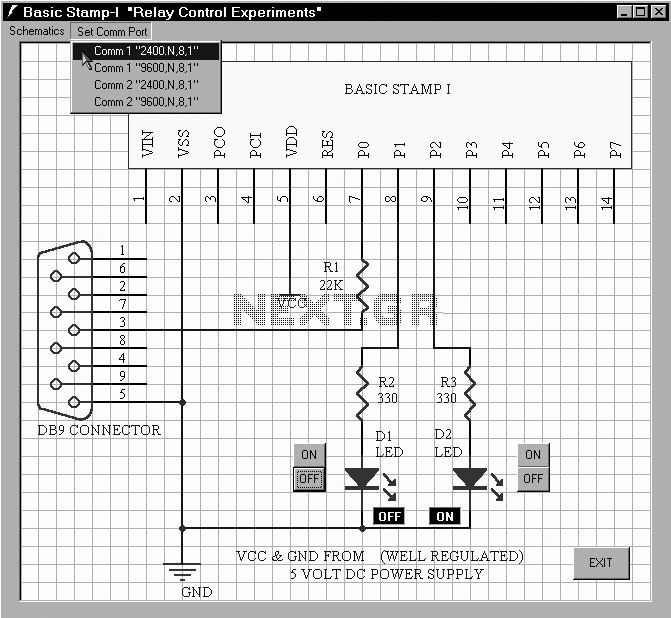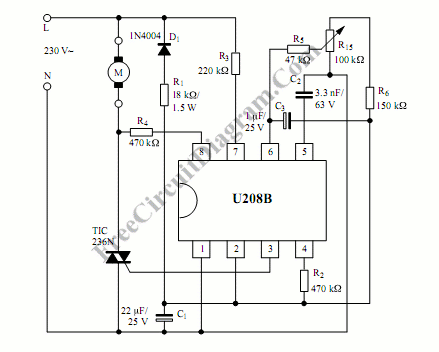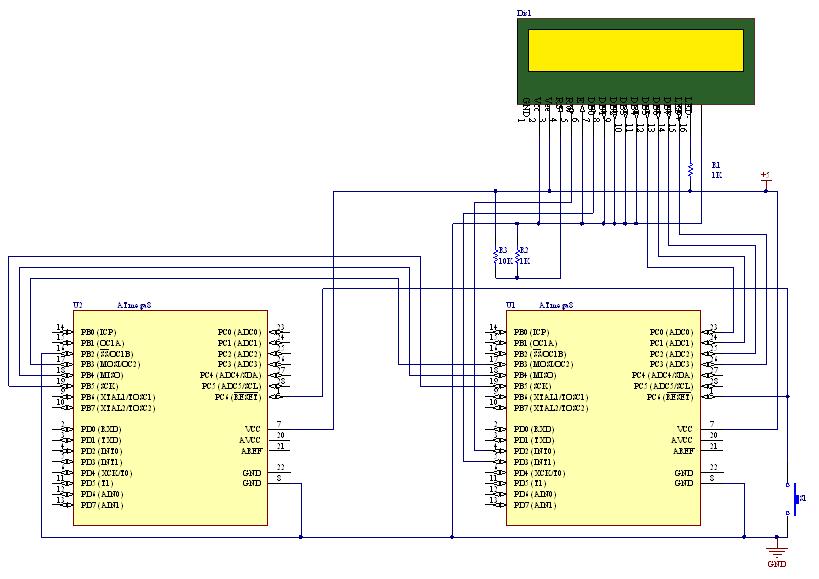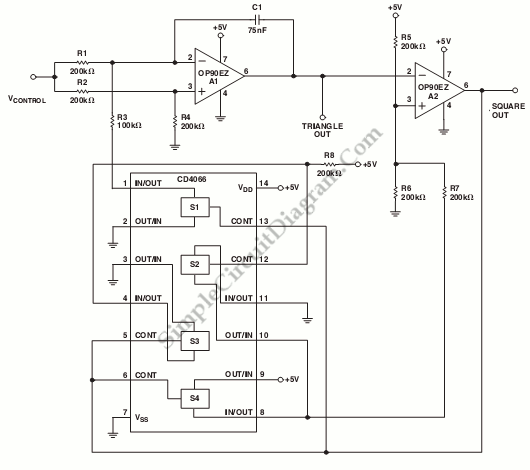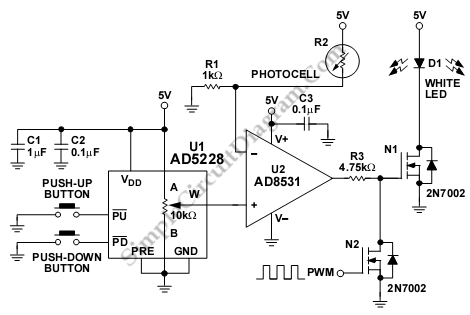
remote control sckt

The miniature transmitter module, measuring 34 mm x 29 mm x 10 mm, is designed to operate all remote control receiver-switch combinations outlined in this project. A compact 9-volt PP3 battery can be utilized with the transmitter, which is capable of transmitting signals up to 15 meters without an aerial. The operating frequency of the transmitter is 300 MHz. The VG40R remote control receiver module, measuring 45 mm x 21 mm x 13 mm, can be employed in various circuits. To activate a relay momentarily, the switch on the transmitter unit is pressed, resulting in a positive voltage at the output pin of the VG40R module. This voltage biases the relay driver transistor, allowing the relay to activate while the push-to-on micro switch on the transmitter is pressed. The relay remains energized as long as the switch is held down and deactivates upon release. Any electrical or electronic load can be connected through the normally open contacts of the relay. For activating a relay for a preset duration, the transmitter switch is pressed momentarily, providing base bias to the transistor from the VG40R module. This causes the transistor to conduct and send a trigger pulse to an IC 555 configured as a monostable multivibrator, keeping the relay activated until the preset time elapses. The time delay can be adjusted from a few seconds to several minutes by changing the timing components. To switch a load on and off, a 555 IC and a decade counter 4017 IC are implemented, with the 4017 configured as a flip-flop for toggle action. The Q2 output is connected to the reset terminal, while the Q1 output remains unused. The Q0 output controls the relay, allowing it to be activated and deactivated by alternately pressing the transmitter switch. Pressing the switch once activates the relay, while pressing it again turns the relay off. This process can be repeated, with the monostable multivibrator's time delay set to approximately one second. It is recommended to use a short length of shielded wire between the VG40R receiver module output and the rest of the circuit. The transmitter, powered by a 9V battery, should be housed in a non-metallic cabinet (such as plastic) to maximize operational range.
The miniature transmitter module operates effectively within a designated frequency range of 300 MHz, making it suitable for various remote control applications. The compact design allows for easy integration into existing systems while maintaining a lightweight profile. The use of a 9-volt PP3 battery ensures a reliable power source, facilitating operation without the need for extensive wiring or additional components.
In the relay activation circuit, the VG40R module serves as the core component, providing the necessary control signals. The relay driver transistor amplifies the signal from the VG40R output, allowing for the control of higher power loads through the relay contacts. The versatility of the system is highlighted by the ability to configure the relay for momentary activation or for preset timed operations, utilizing the IC 555 in monostable mode. The adjustable timing components enhance the system's flexibility, accommodating various application requirements.
For toggle operations, the integration of the 4017 decade counter IC allows for a straightforward method of controlling the relay state. This configuration simplifies the user interface by enabling single-button operation for both activation and deactivation of the load. The design ensures that the relay can be controlled reliably, with a brief delay introduced by the monostable multivibrator to prevent rapid toggling caused by inadvertent button presses.
To ensure optimal performance, it is crucial to implement the recommended shielding and housing practices. The use of shielded wire minimizes interference and signal degradation, while a non-metallic enclosure prevents signal attenuation, thereby maximizing the operational range of the transmitter module. Overall, this circuit design offers a robust solution for remote control applications, with a focus on user-friendly operation and reliable performance.The miniature transmitter module shown in Fig. 1, which just measures 34 mm x 29 mm x 10 mm, can be used to operate all remote control receiver-cum-switch combinations described in this project. A compact 9-volt PP3 battery can be used with the transmitter. It can transmit signals up to 15 metres without any aerial. The operating frequency of the transmitter is 300 MHz. The following circuits, using VG40R remote control receiver module measuring 45 mm x 21 mm x 13 mm, can be used to: To activate a relay momentarily (see Fig. 2), the switch on the transmitter unit is pressed, and so a positive voltage is obtained at output pin of VG40R module.
This voltage is given to bias the relay driver transistor. The relay gets activated by just pressing push-to-on micro switch on the transmitter unit. The relay remains energised as long as the switch remains pressed. When the switch is released, the relay gets deactivated. Any electrical/electronic load can be connected via N/O contacts of the relay. To activate a relay for a preset period (refer Fig. 3), the switch on the transmitter unit is pressed momentarily. The transistor gets base bias from VG40R module. As a result the transistor conducts and applies a trigger pulse to IC 555, which is wired as a monostable multivibrator. The relay remains activated till the preset time is over. Time delay can be varied from a few seconds to a few minutes by adjusting timing components. To switch on and switch off a load (refer Fig. 4), a 555 IC and a decade counter 4017 IC are used. Here the 4017 IC is wired as a flip-flop for toggle action. This is achieved by connecting Q2 output to reset terminal while Q1 output is unused. Q0 output is used for energising the relay. The relay is activated and deactivated by pressing the transmitter switch alternately. So, to activate the load, just press the transmitter switch once, momentarily. The relay will remain activated. To switch off the relay, press the transmitter switch again. This process can be repeated. Time delay of monostable multivibrator is set for about one second. Note: Short length of shielded wire should be used between VG40R receiver module output and the rest of the circuit.
The transmitter with 9V battery must be housed inside a nonmetallic (say, plastic) cabinet for maximum range of operation. Disclaimer: All the information present on this site are for personal use only. No commercial use is permitted without the prior permission from authors of this website. All content on this site is provided as is and without any guarantee on any kind, implied or otherwise.
We cannot be held responsible for any errors, omissions, or damages arising out of use of information available on this web site. The content in this site may contain COPYRIGHTED information and should not be reproduced in any way without prior permission from the authors.
🔗 External reference
The miniature transmitter module operates effectively within a designated frequency range of 300 MHz, making it suitable for various remote control applications. The compact design allows for easy integration into existing systems while maintaining a lightweight profile. The use of a 9-volt PP3 battery ensures a reliable power source, facilitating operation without the need for extensive wiring or additional components.
In the relay activation circuit, the VG40R module serves as the core component, providing the necessary control signals. The relay driver transistor amplifies the signal from the VG40R output, allowing for the control of higher power loads through the relay contacts. The versatility of the system is highlighted by the ability to configure the relay for momentary activation or for preset timed operations, utilizing the IC 555 in monostable mode. The adjustable timing components enhance the system's flexibility, accommodating various application requirements.
For toggle operations, the integration of the 4017 decade counter IC allows for a straightforward method of controlling the relay state. This configuration simplifies the user interface by enabling single-button operation for both activation and deactivation of the load. The design ensures that the relay can be controlled reliably, with a brief delay introduced by the monostable multivibrator to prevent rapid toggling caused by inadvertent button presses.
To ensure optimal performance, it is crucial to implement the recommended shielding and housing practices. The use of shielded wire minimizes interference and signal degradation, while a non-metallic enclosure prevents signal attenuation, thereby maximizing the operational range of the transmitter module. Overall, this circuit design offers a robust solution for remote control applications, with a focus on user-friendly operation and reliable performance.The miniature transmitter module shown in Fig. 1, which just measures 34 mm x 29 mm x 10 mm, can be used to operate all remote control receiver-cum-switch combinations described in this project. A compact 9-volt PP3 battery can be used with the transmitter. It can transmit signals up to 15 metres without any aerial. The operating frequency of the transmitter is 300 MHz. The following circuits, using VG40R remote control receiver module measuring 45 mm x 21 mm x 13 mm, can be used to: To activate a relay momentarily (see Fig. 2), the switch on the transmitter unit is pressed, and so a positive voltage is obtained at output pin of VG40R module.
This voltage is given to bias the relay driver transistor. The relay gets activated by just pressing push-to-on micro switch on the transmitter unit. The relay remains energised as long as the switch remains pressed. When the switch is released, the relay gets deactivated. Any electrical/electronic load can be connected via N/O contacts of the relay. To activate a relay for a preset period (refer Fig. 3), the switch on the transmitter unit is pressed momentarily. The transistor gets base bias from VG40R module. As a result the transistor conducts and applies a trigger pulse to IC 555, which is wired as a monostable multivibrator. The relay remains activated till the preset time is over. Time delay can be varied from a few seconds to a few minutes by adjusting timing components. To switch on and switch off a load (refer Fig. 4), a 555 IC and a decade counter 4017 IC are used. Here the 4017 IC is wired as a flip-flop for toggle action. This is achieved by connecting Q2 output to reset terminal while Q1 output is unused. Q0 output is used for energising the relay. The relay is activated and deactivated by pressing the transmitter switch alternately. So, to activate the load, just press the transmitter switch once, momentarily. The relay will remain activated. To switch off the relay, press the transmitter switch again. This process can be repeated. Time delay of monostable multivibrator is set for about one second. Note: Short length of shielded wire should be used between VG40R receiver module output and the rest of the circuit.
The transmitter with 9V battery must be housed inside a nonmetallic (say, plastic) cabinet for maximum range of operation. Disclaimer: All the information present on this site are for personal use only. No commercial use is permitted without the prior permission from authors of this website. All content on this site is provided as is and without any guarantee on any kind, implied or otherwise.
We cannot be held responsible for any errors, omissions, or damages arising out of use of information available on this web site. The content in this site may contain COPYRIGHTED information and should not be reproduced in any way without prior permission from the authors.
🔗 External reference
